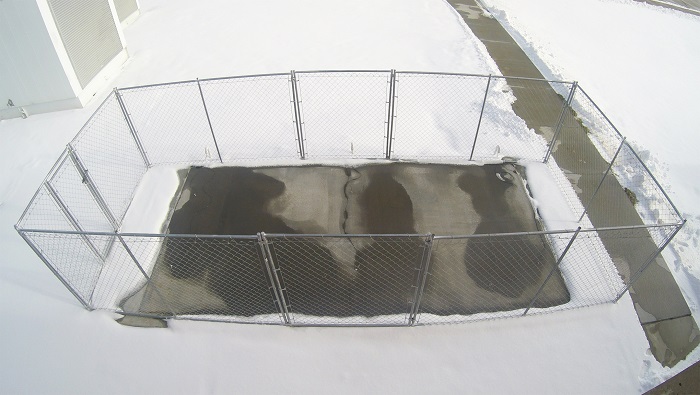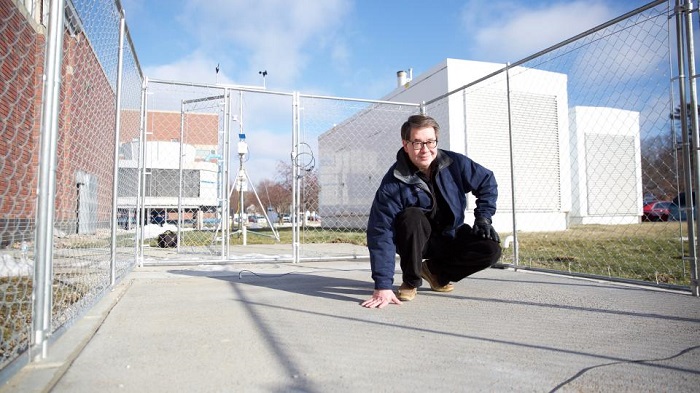A team of researchers from the University of Nebraska (Lincoln) will soon demonstrate to the Federal Aviation Administration (FAA) a rather unique concept for melting the ice and snow resting atop concrete — using electricity.

The concept’s designer, professor of civil engineering Chris Tuan (who is pictured touching the concrete below), came about this solution by adding steel shavings and carbon particles to regular concrete mix. In total, the new ingredients measure approximately 20% of the mixture’s composition, which is enough to conduct electricity for the purpose of melting ice and snow, but safe enough to allow for a human to touch it.

Tuan’s team will demonstrate the concept to the FAA in March. If the Administration is satisfied with its performance, it will move to scale the tests up — specifically, they’ll do this by integrating the technology into the tarmac of a major US airport.
“To my surprise, they don't want to use it for the runways,” Tuan said. “What they need is the tarmac around the gated areas cleared, because they have so many carts to unload — luggage service, food service, trash service, fuel service — that all need to get into those areas.
“They said that if we can heat that kind of tarmac, then there would be (far fewer) weather-related delays. We're very optimistic.”
One of the reasons why Tuan is so confident with his design is because it’s already in use in a bridge located about 15 miles from his office. In 2002, Tuan and the Nebraska Department of Roads made the 150-foot Roca Spur Bridge the world’s first to use conductive concrete. 52 conductive slabs were put in altogether, and they’ve proven capable time and again to de-ice the bridge’s surface for over 10 years now.
“Bridges always freeze up first, because they're exposed to the elements on top and bottom,” Tuan said. “It's not cost-effective to build entire roadways using conductive concrete, but you can use it at certain locations where you always get ice or have potholes.”
Expounding upon the issue of potholes, Tuan explained they’re often the result of overusing salt and de-icing chemicals, which corrode concrete and contaminate the groundwater over time. Conductive concrete eliminates the need to go this route, and it’s also more cost efficient — the power necessary to de-ice the Roca Spur Bridge during a three-day storm costs about $250 which, it turns out, is several times less than a truckload of chemicals.
Beyond de-icing bridges and tarmacs, there is another iteration of this approach that is equally as useful. By replacing the limestone and sand normally used in concrete with a mineral called magnetite, the mixture can shield against electromagnetic waves.
Why would this be useful? Well, as Tuan explains, the electromagnetic spectrum includes the radiofrequency waves transmitted and received by cell phones, so the magnetite concrete could be of interest to those worried about being spied upon.
To demonstrate the electromagnetic blocking concrete, Tuan and team build a small structure within their laboratory using the special material.
“We invite parties that are interested in the technology to go in there and try to use their cellphones,” said Tuan, who patented his design through NUtech Ventures. “And they always receive a no-service message.”
Worth pointing out: Tuan developed the concrete with the assistance of Lim Nguyen, associate professor of electrical and computer engineering; Bing Chen, professor of electrical and computer engineering; and Sherif Yehia, a professor at the American University of Sharjah who earned his doctorate in civil engineering at UNL.
Research into this project is being funded by the FAA.
Via the University of Nebraska
Advertisement
Learn more about Electronic Products Magazine





